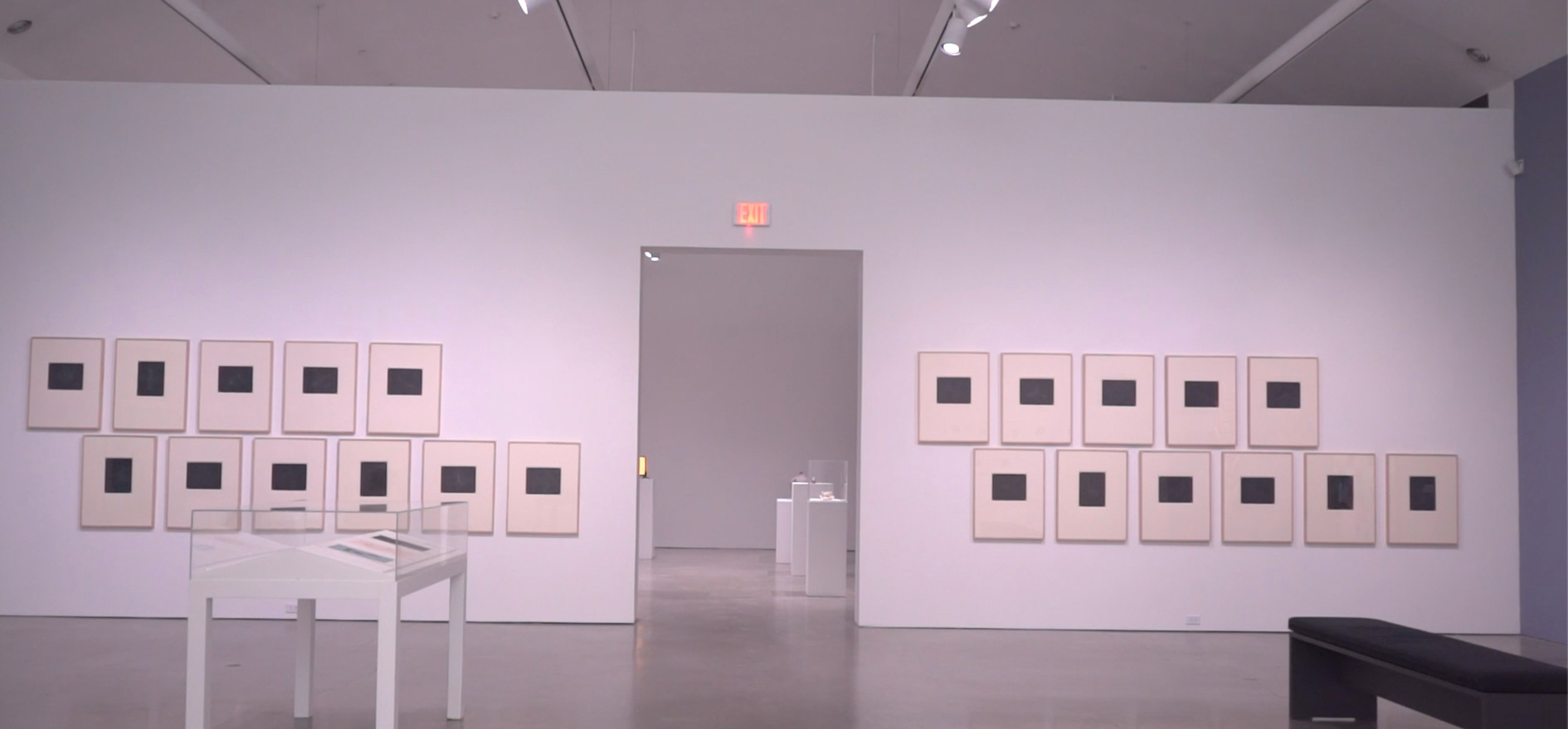
- Marisa Espe
Horizons are not infinite examines the use of axonometric projection by Roger Brown (1941–1997), Agnes Denes (b. 1931), and Fred Sandback (1943–2003) and speculates on the significance of this technique during the 1970s and 1980s. By reflecting on the cultural conditions of these decades and how they resonate with the present, the exhibition gathers paintings and prints whose axonometric visions of the world create ways to imagine the future.
Axonometric projection is a technique for representing three-dimensional space in two dimensions. It is achieved by projecting the coordinates of a three-dimensional object onto a fixed surface, such as the picture plane of a painting, drawing, or print, or what’s referred to as the “projection plane” in the discipline of descriptive geometry. The rays connecting the three-dimensional coordinates to the corresponding points on the projection plane are parallel, resulting in compositions often characterized by a sense of flatness, where the scenes depicted appear to unfold across a work’s surface rather than recede back into it.
This exhibition, which features works made between 1972 and 1981, proposes that axonometric projection was an apt expression of the shifts that occurred during this period. The 1970s and 1980s witnessed increasingly privatized and deregulated economic policies, agitation of Cold War tensions and conflicts, and technological innovations such as live satellite television broadcasting, GPS navigation, mobile phones, and email. These decades were marked by new ways to connect and consume, with media and market more networked than ever before. Paradoxically, as the capacity for worldwide connectivity expanded, so too did the sense of geopolitical instability and economic imbalance. Axonometric projection—and its capacity to show disparate information in an organized manner and to resolve compositional contradictions—visually and conceptually complemented the ideological conditions of this era. Roger Brown, Agnes Denes, and Fred Sandback engaged axonometric projection and its unique qualities to explore fundamental notions of reality, representation, and reception.
In addition to the way that axonometric projection structures the content within a work, this technique also produces a unique phenomenological relation between a work and its viewer. Whereas the idealized viewer of a perspectival composition is stationary and monocular, and maintains a fixed distance from the work, the viewer of an axonometric composition is comparatively more mobile. Untethering viewers from a prescribed vantage point, axonometric projection encourages them to pan, rove, and scan. This sense of flexibility echoes how neoliberalism produces an illusion of flexibility, an ideology that took hold during the same time these works were produced. How one lives, works, and spends are choices ultimately circumscribed within the logic of capitalism, a system in which flexibility does not equate to freedom.
If one accepts that possibilities are not limitless, then such an understanding is perhaps most adequately expressed through a representational technique in which horizons are not rendered as infinite. The works of Horizons are not infinite demonstrate how axonometric projection forecloses illustration of a distant vanishing point, of an infinite horizon. They underscore how attempts to image the world from an optical perspective result only in illusion. But if one can instead accept that horizons have discrete ends, then other, seemingly insurmountable, regimes might similarly come to an end—as distant or oblique as that end may appear. From landscapes to cityscapes, from the corner of a room to the edges of the earth, these works by Brown, Denes, and Sandback present axonometric visions of a possible world, hope in finitude, and ways to imagine the future.





